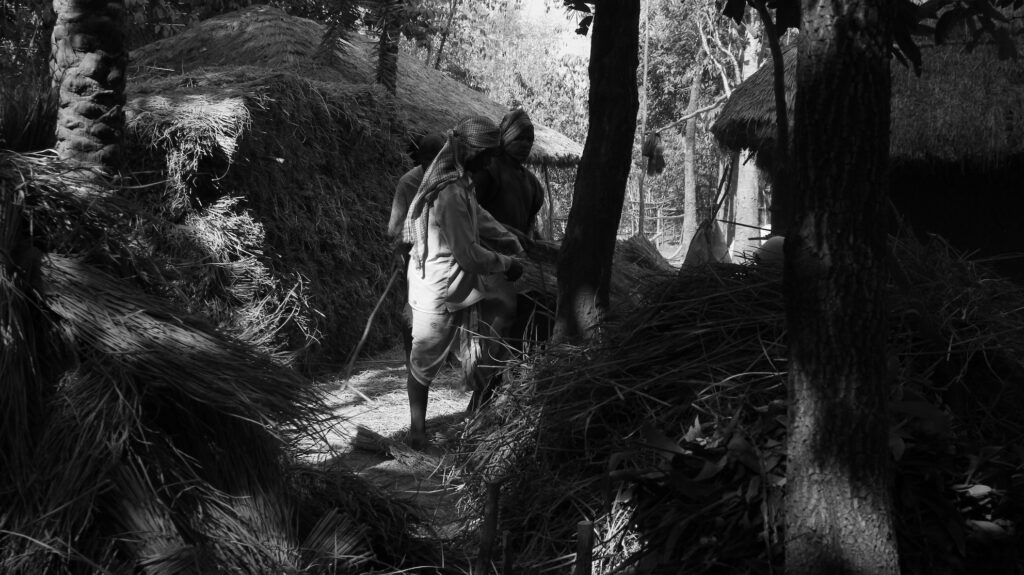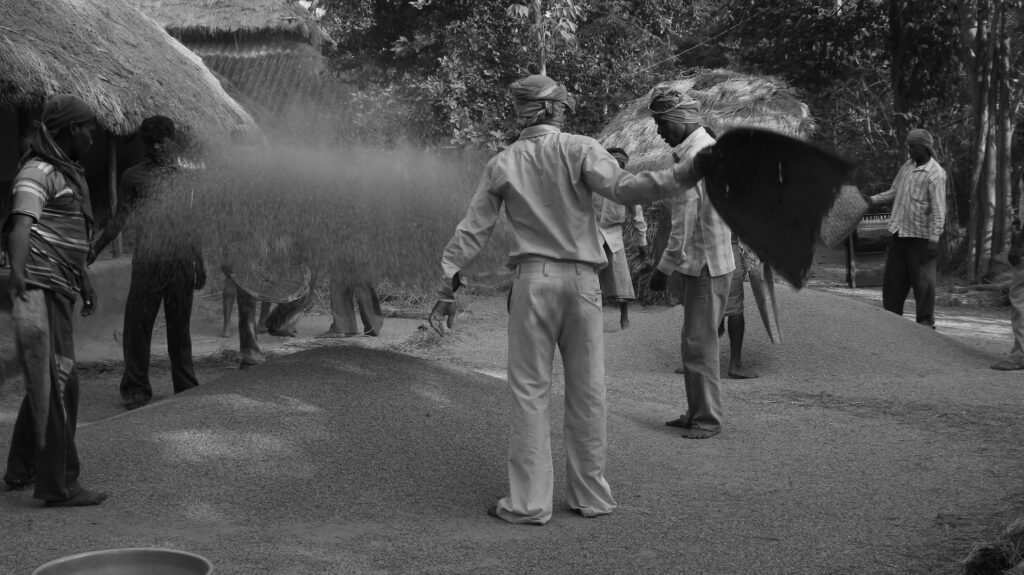home > menu > about > borotalpada
Located in India, in the state of West Bengal in India, close to the border with the state of Orissa, Borotalpada is a tribal Santhal village. According to the census carried out in April 2019 by the five morols (customary officials appointed by the villagers), Borotalpada then had 496 inhabitants distributed in 95 houses.

The Santhals are one of the Adivashi groups – from Sanskrit adi, “origin”, and vash, “to dwell” or “to reside”: the “first inhabitants”, the aborigines of India, the ones that the central government administration classify under the category of “tribal people”, the peripheral of the periphery. Living mostly in remote areas, the Ādivāsī have remained outside the mainstream of the Indo-European civilisation that has shaped the Indian subcontinent since the second millennium BC. They were largely ignored by other Indians until the British colony and more systematic explorations of the territory. Today, more than seven decades after independence, the Ādivāsī constitute approximately 8% of the country’s total population. Officially recognised by the constitution as “Scheduled Tribes”, they form administratively part of the category entitled “Scheduled Castes and Tribes”, that is to say: “untouchable and tribal”. The non-indigenous inhabitants of India often consider them “primitive”. One shall also remember that the father of the Indian constitution, B.R. Ambedkar, author of the essay The Annihilation of the Castes and “untouchable” himself, considered the Ādivāsī of India as “children” who had to be guided on the path of “progress”. Perhaps this vision is not exactly neo-colonialist, but it is certainly paternalistic. It is a myopia from which many still suffer today. (⇒ Read an excerpt from Arundhati Roy’s Introduction to The annihilation of the castes, in Caravan magazine).

